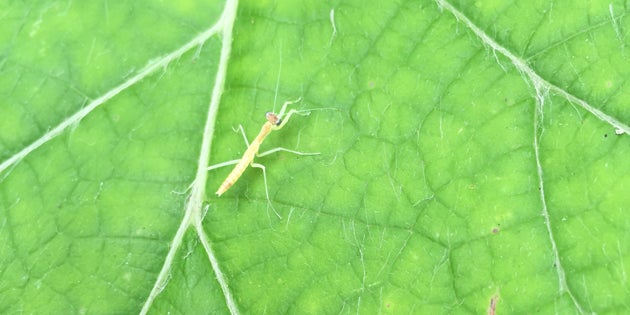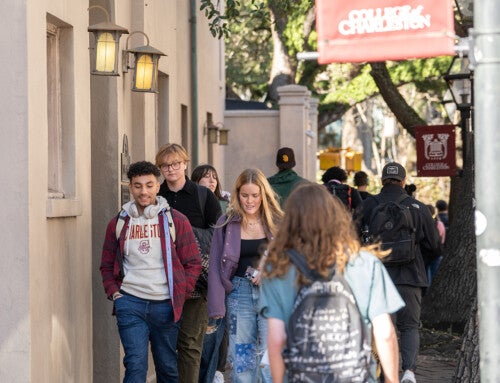They’re crawling all over campus and gobbling up everything in sight.
No, we’re not talking about college students, but instead the thousands of praying mantises being released across the College of Charleston. And perhaps it’s not fair to say they’re eating everything, but rather all things undesirable within the College’s gardens, including pests such as aphids, thrips, grubs and mites (and occasionally each other).
The mantises release across campus is orchestrated by the College’s Arboretum and Grounds Department, which prefers to use these natural predators in place of insecticides to control pests. The department has been releasing mantises and ladybugs since 2009 after discovering that inorganic methods were proving ineffective.
“Our insect problems were actually getting worse from the foliar sprays, so we changed our methods,” explains Paty Cowden, manager of the arboretum and grounds department. “It takes years to get things turned around, but we’re doing what we can.”
Beyond releasing these helpful insects, the College’s grounds department has gone green by squeezing numerous small flower and vegetable gardens into various nooks on campus, using fish emulsion as a fertilizer, making their own compost, and using natural mosquito sprays. The result is a stunning campus carpeted in an array of healthy and happy plantings.
Each praying mantis egg sac contains about 200 mantises. The mantises measure less than a half-inch long at birth, but can mature to a length of six inches.
The release of praying mantises at the College of Charleston is especially significant because the Carolina mantid is the official state insect of South Carolina. Among other reasons, the South Carolina legislature recognized the native species for its “special role in all forms of agriculture in helping to control harmful insects; and it provides a perfect specimen of living science for the school children of this state.”
When this official state insect designation was being discussed by the legislature back in 1988, Rep. Derwood L. Aydlette Jr. of Charleston jokingly suggested that the palmetto bug, or cockroach, be given top honors instead of the praying mantis. According to the South Carolina Encyclopedia, Aydlette’s suggestion was a protest against the time and money spent by the legislature “in having all these little state symbols.”
In any case, mantises are more than symbols at the College. Without them, campus wouldn’t look half as good.
For more on the College’s mantises, check out a story by Charleston’s News 2:






